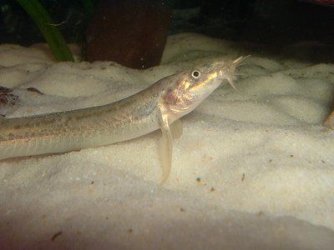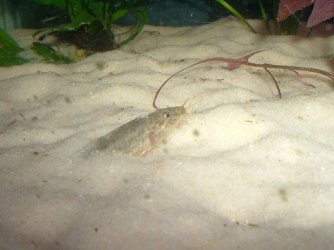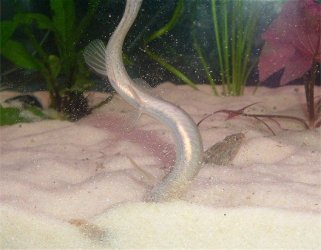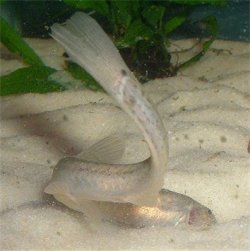KeddyPie
Fishaholic
All day, the Dojos have been acting funny. Not "a storm is coming" funny, either (though one IS in fact coming). The female has been burrying herself in the sand a lot more then usual, the male was chasing her around, and then decided to stay a few inches away from her while she was buried and keep watch. Then for no reason, unburied her and scared her away. I think it might be some sort of strange mating thing.
Also, the male (when keeping watch) has been hoising himself high on his pectoral fins, as opposed to laying flat like he normally does. I'm not sure if it is so he can see predators better (because the inch long tetras as SUCH a predator!) or if it's an attempt to look big and strong...

Male on pecs

Female in sand

Male unburing female

Male investigating the area female was previously.
Any hints to what is going on with them?
Katy
Also, the male (when keeping watch) has been hoising himself high on his pectoral fins, as opposed to laying flat like he normally does. I'm not sure if it is so he can see predators better (because the inch long tetras as SUCH a predator!) or if it's an attempt to look big and strong...

Male on pecs

Female in sand

Male unburing female

Male investigating the area female was previously.
Any hints to what is going on with them?
Katy


